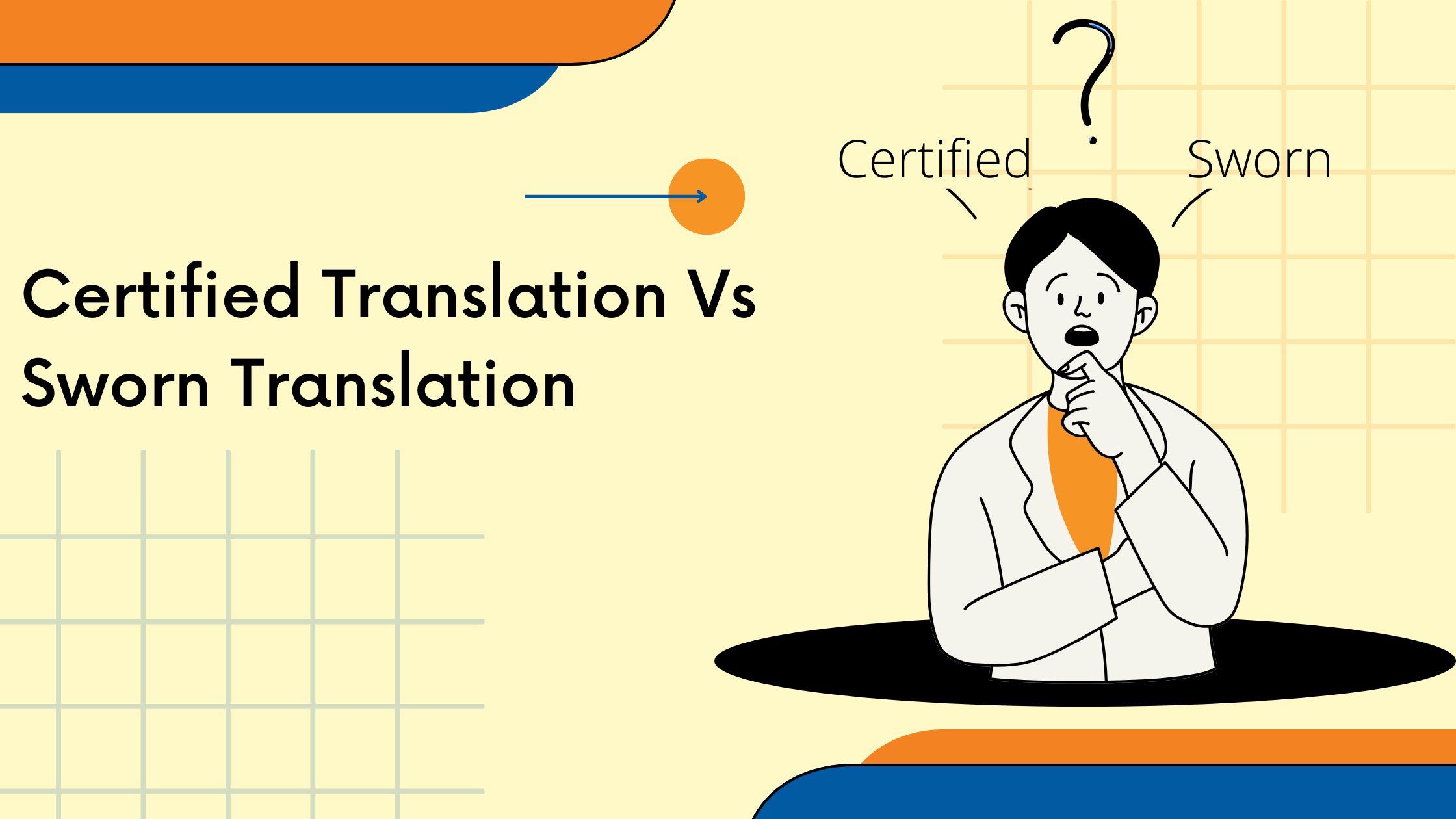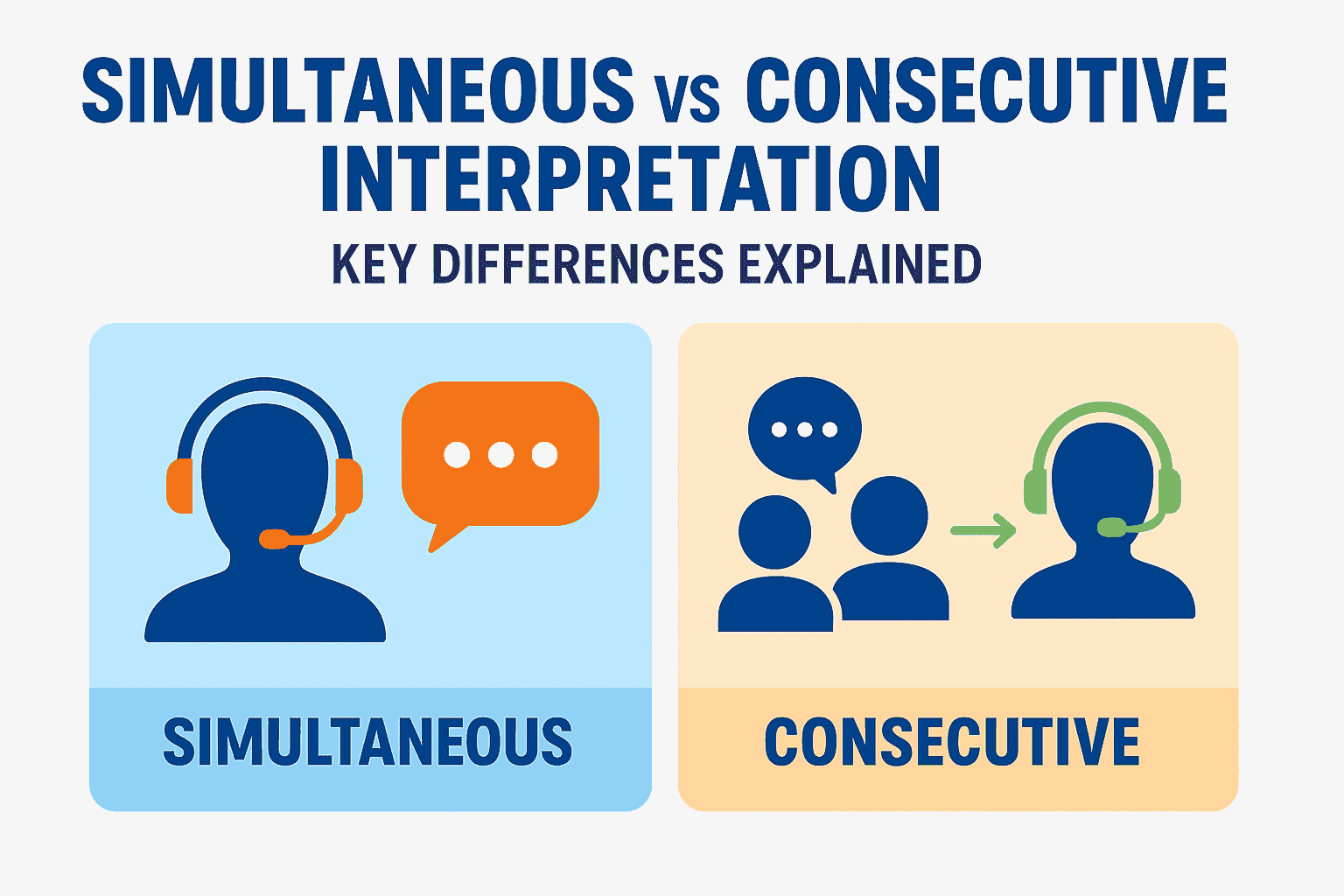
Certified Translation Vs Sworn Translation
When you must have applied for your studies
abroad, you must have seen the phrases-"certified translation" and
"sworn translation"?
Or, you must have heard then in your
industry/ sector while doing business in other country?
Confused between these two?
This article will help you navigate the
complex world of certified and sworn translation. Although they both help to
confirm the accuracy of translated materials, they have varied uses, degrees of
importance in different nations and settings.
This detailed guide will teach you when to
use each type of translation and how to make sure your documents meet your
specific needs.
Certified Translation
When it comes to legal recognition and
trustworthiness, certified translations are a step above standard translations.
Some translation agencies provide certified translated documents. These
certificates are given to them by genuine international authority. It
acknowledges their trustworthiness and authenticity.
Certified Translations: What You Should
Know?
1.Accuracy: Accuracy
is the first approach to certified translation. A certified translation
accompanies a "Certificate of Translation”.
It usually includes:
o
The contact data of the
translator or agency
o
Declaration of the translator's
competency
o
Claim of accuracy of the
translation
o
The translators' signature
2. Qualified Translators: Qualified translators are experienced translators. They have the
necessary subject matter knowledge to deal with the requisite document.
3.No Requirement of Legal Oath: Certified translators lack a legal oath unlike those of sworn
translators. Their certification rests on their professional credentials and
standing.
4. Flexibility: Certified translation standards may vary by country and receiving
institution policies. Sometimes those who can show competence in both the
target and the source languages can offer official translations.
Where To Use Certified Translations?
Particularly in nations like the United
States, Canada, and the United Kingdom, certified translations are highly
sought after and used in many different contexts. Typical uses include:
1. Academic Goals:
o
Academic records and
transcriptions
o
Degree diplomas and
certificates
o
Course descriptions and
syllabi.
o
Letters of recommendation.
2.Immigration Procedures:
o
Birth certifications
o
Marriage licenses
o
Divorce decrees.
o
Police clearance certificates
3. Commercial Transactions:
o
Agreements and contracts
o
Income statements
o
Business documentation
o
Manuals and product information
4. Professional Licencing:
o
Professional credentials and
certificates
o
letters of work experience
o
Certificate of training
5. Personal Documents:
o
Driving License
o
Medical records
o
Adoption documentation
6.Legal Actions:
o
Affidavits
o
Depositions
o
Declarations
o
Court records
Certified translations are recognised in
most of the countries. However, some countries may require sworn translations
on case-by-case basis.
What Are Sworn Translations?
Sworn translation are a step ahead of
certified translations. It means that apart from reliability and accuracy, it
provides official acknowledgement and accountability of their genuineness.
Translation services use translators who
are duly assigned and sworn in by the court. This guarantees accurate and
genuine document translations
Sworn Translations: What You Should
Know?
1. Oath by Legal Authority: Sworn translators are court appointed translators. They must swear
before the court to translate documents accurately and truthfully. They do so
under penalty of law.
2. Official Status: In some nations, sworn translators—also referred to as
"court-appointed" or "official"—have a semi-official role
inside the judicial system.
3. Testing: Usually,
those aspiring to be sworn translators must:
o
Show your translating and
language ability by passing demanding tests.
o
Review character and integrity
standards.
o
Meet particular career and
educational criteria.
4. Translator’s Stamp: Sworn translations can have more than just the translator's name
and statement. The document also includes an official stamp or seal.
5. Legal Binding: Sworn translations are legally binding documents in many countries.
Where To Use Sworn Translations?
Spain, Mexico, Italy, Brazil, Norway, and
France are some of the countries where sworn translation is used. They are mostly required in cases where utmost
legal compliance is mandatory. You will need sworn translations for:
For individuals:
o
Procedures of adoption
o
Certification proving the lack
of criminal records
o
Birth, marriage, and death
certificates—certification of civil registration
o
Transcripts and diplomas
o
Medical certifications and
documentation
o
Notarised papers
o
Residence permits
For Businesses:
o
Certificate from Treasury
Departments and Mercantile Registry
o
Contracts and Documents
o
Judicial decisions
o
Articles of association and
incorporation deed
o
Powers of attorney
o
Annual reports and financial
statements
It is also necessary to take note that the
requirements for a sworn translator may vastly differ from one country to
another. It is always important to determine what the criteria of the nation or
the organisation to which the paperwork is presented is.
What Makes Certified and Sworn
Translations Different?
Familiarising oneself with certified and
sworn translations will ensure all your documents meet the benchmark standards.
Here are the main differences:
1.Legal
Certified translations showcase their
authenticity and accuracy. But they have less legal weight than that of sworn
translations. In some countries, sworn translations are legitimate legal
records.
2. Translator Standards:
Qualified and professional translators
provide accurate and precise translated documents. They are often the native
speakers. It is not mandatory that these translators are court appointed.
However, for sworn translation, court
appointed translators are used.
3. Geographic Reference:
Canada, United States of America, and the
United Kingdom acknowledges certified translation. Sworn translations are
frequently necessary in civil law countries.
4. Formalities:
The certified translator signs the document
at the end of the translated documents to verify its accuracy. These are added
to the translated document along with the name and statement. This makes them
more trustworthy.
Final Verdict
In the end, certification and sworn
translation both demonstrate the authenticity of the translated document. But
they vary in terms of their legal status, acceptance, and common usage.
Whether you are looking for international prospects, handling cross-border legal issues, or negotiating immigration policies, knowing these distinctions can help you to make sure your translated materials meet the essential criteria. As the world becomes more connected, having the right kind of translation can help you reach your personal, academic, or business goals across borders.



